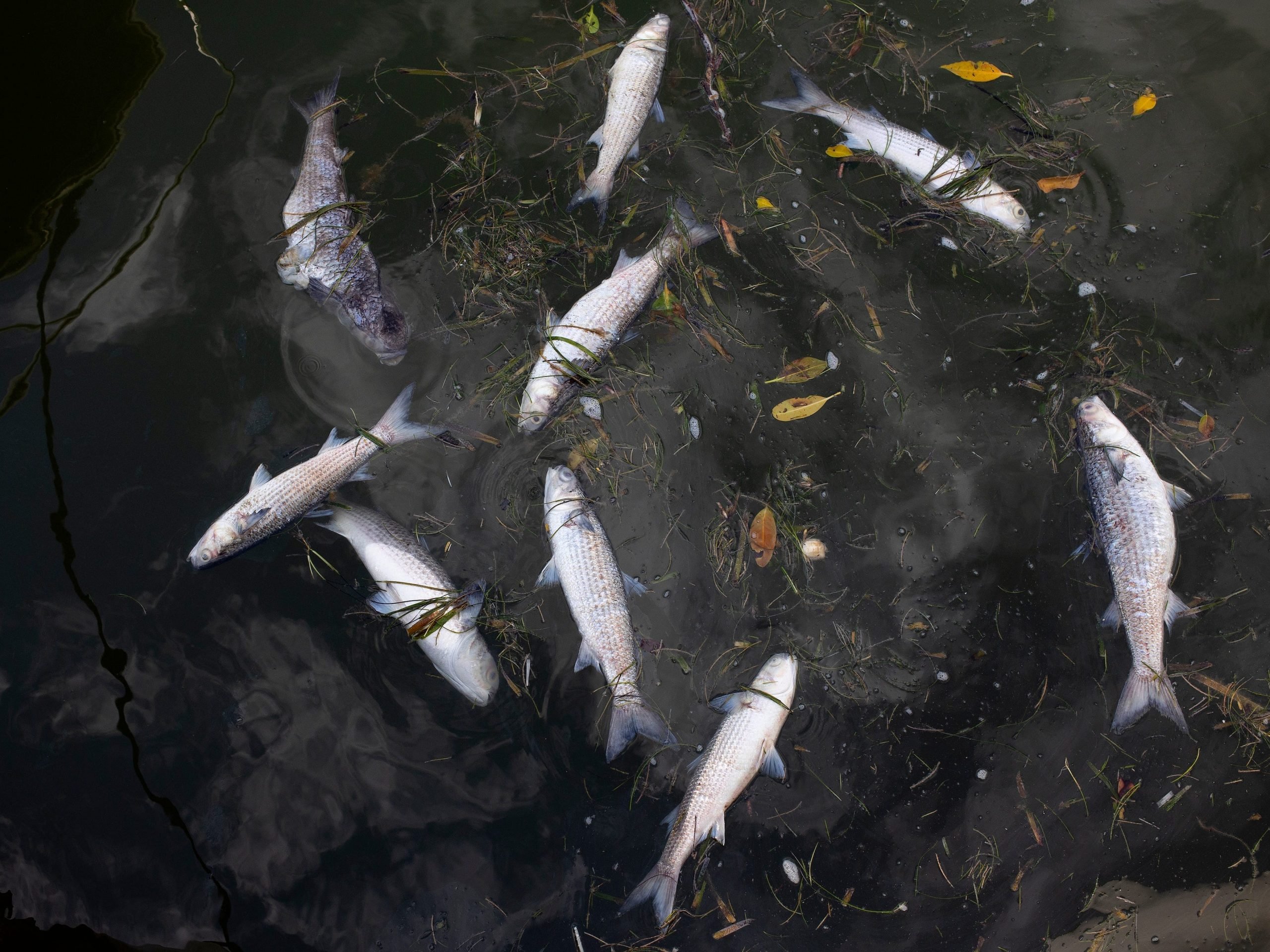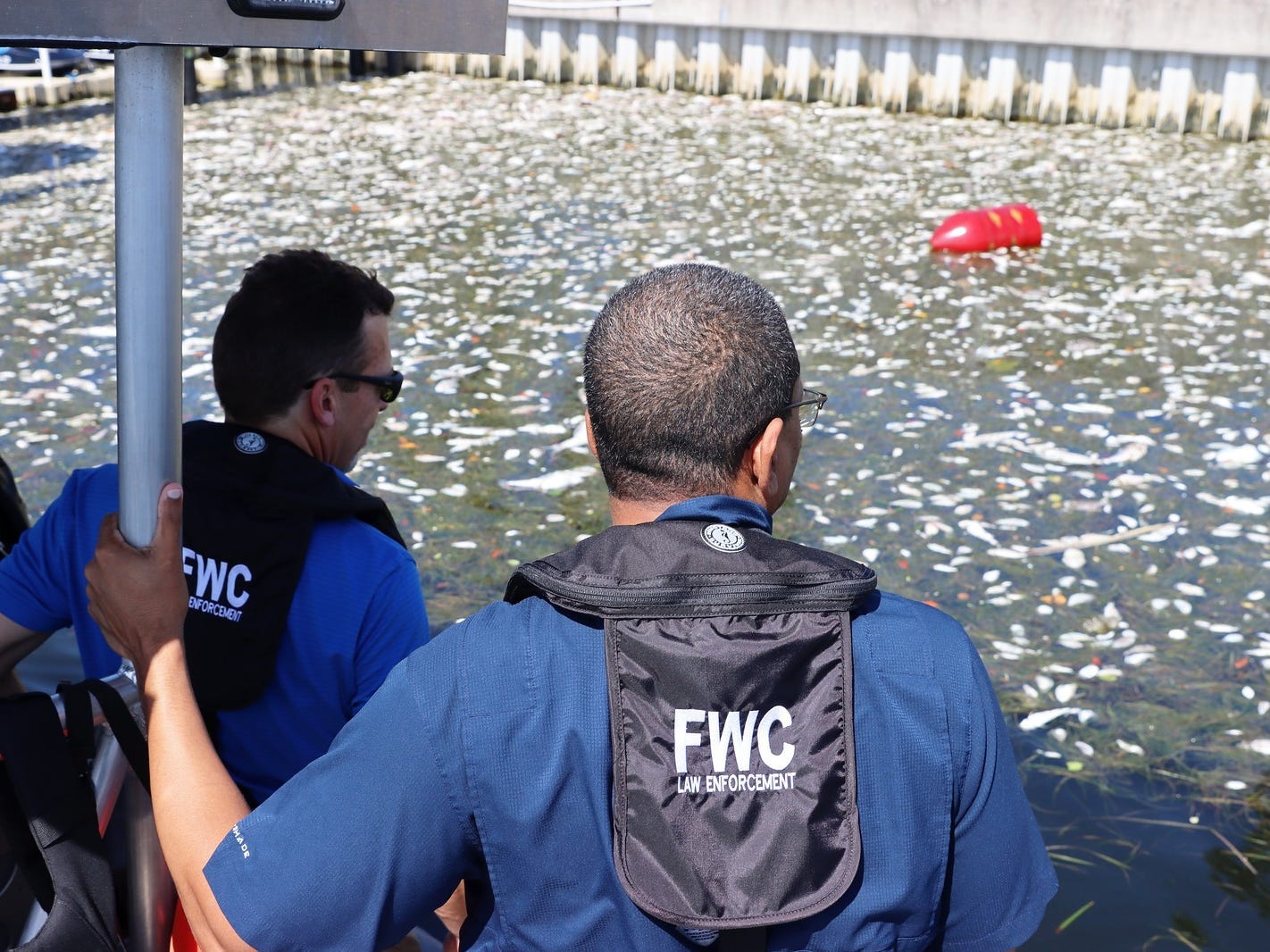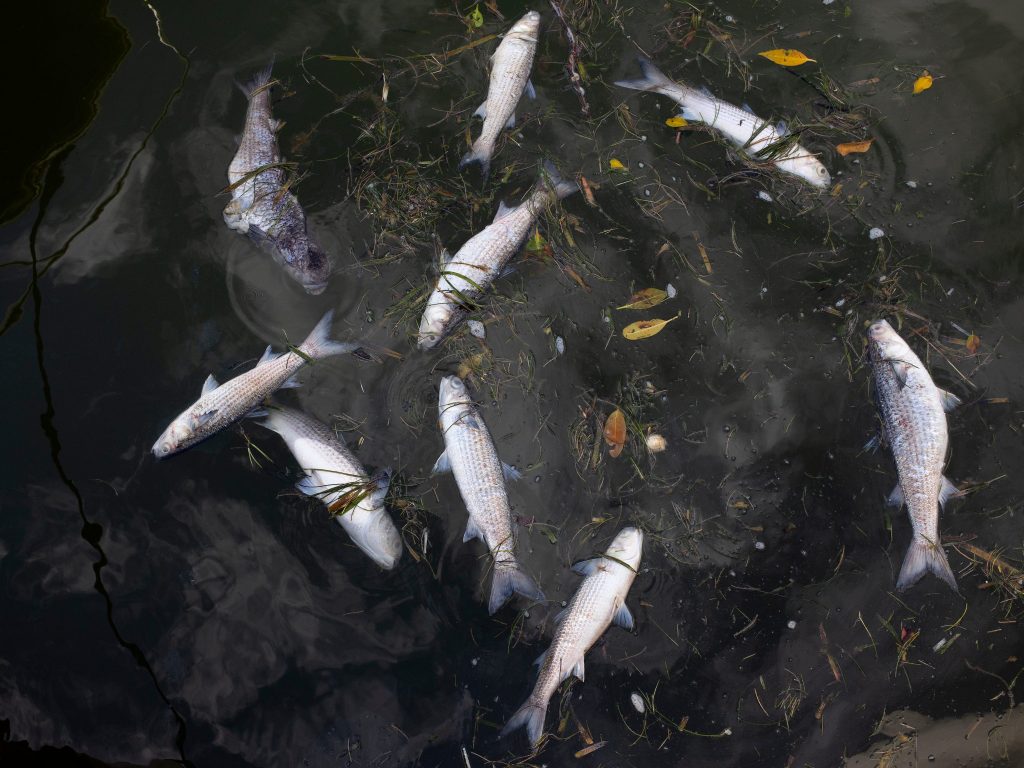
Andrew Lichtenstein/Corbis via Getty Images
- Counties across Florida have been cleaning up hundreds of tons of dead fish.
- Clumps of rotting marine life washed up after weeks of toxic red tide sweeping Florida's Gulf Coast.
- The Tampa Bay and St. Petersburg areas recorded having to clean up 800 tons of dead fish since July 1.
- Visit Insider's homepage for more stories.
Some 800 tons of dead fish washed up on Florida's Gulf Coast after a wave of toxic red tide algae blooms killed off scores of marine life.
The Florida Fish and Wildlife Conservation Commission has pointed to red tide – a phenomenon where many microscopic bacteria bloom and spread – as the likely culprit behind these hordes of fish dying off. The commission tested the dead creatures and found traces of Karenia brevis, a toxic, fish-killing algae, in 132 samples.
"On Florida's Gulf Coast, fish kills suspected to be related to [the] red tide were reported in Pasco, Pinellas, Hillsborough, Manatee, Sarasota, and Lee counties over the past week," read a report from the commission.
Per official updates on July 13, Pinellas County removed over 600 tons of dead fish from the area after the waters of Tampa Bay tested positive for 10 to 17 times the normal concentration of red tide bacteria. But Rick Kriseman, mayor of St. Petersburg County on the Gulf Coast, said in a tweet that the total count of dead fish collected there since July 1 has now swelled to over 800 tons.
The troubling sight of tons of rotting fish has prompted environmentalists and local officials alike to call for Florida Gov. Ron DeSantis to declare the red tide a state of emergency for the Tampa Bay area.
"What we really need here is the freeing up of resources to actually get on the water and clean up the dead fish that are already in the water," J.P. Brooker, director of Florida conservation at environmental organization Ocean Conservancy told the Tampa Bay Times. "As those fish decay, they're going to release more nitrogen, which is going to fuel the red tide event even further."

FWC Fish and Wildlife Research Institute
Clearing the canals of dead fish is also costing Florida hundreds of thousands of dollars. Pinellas County public works administrator Claude Tankersley told Newsweek on Monday that the city of St. Petersburg has spent $700,000 on a 150-man cleanup crew to remove the rotting marine life.
Despite these efforts, according to a live map of Pinellas County's dead fish reports seen by Insider, over 55 areas were still reporting scores of dead fish showing up on the shoreline.
"There are hundreds of fish along the west end of Bayway bridge all the way to Macpherson Bayou. The fish are along sea walls, shires, and spillways. The residents have not seen any cleaning efforts in this area. Please help. The water is dark like coffee," read a report filed by Pinellas County resident Betty Rzewnicki on July 20.
Red tide alerts were also up at 14 beaches around the county on July 20, per updates from the county's beach status dashboard. Health warnings from Pinellas County cautioned that people might experience coughing, sneezing, skin irritation, and burning eyes near the algae blooms.
According to NPR news, while red tide algae blooms can occur naturally, the number of fish kills (where massive clumps of dead fish collect around bloom sites), as well as the timing of this year's red tide, is not normal.
NPR spoke to Richard Stumpf, an oceanographer at the National Oceanic and Atmospheric Administration, who said that algae blooms normally occur in the fall and that severe summer blooms of this magnitude have happened less than five times in the last 25 years.
A 2018 study from the University of Florida found as well that climate change is warming the ocean's waters and causing a marked uptick in the amount of algae blooms - and with that, the frequency of harmful red tides.
CNN separately reported that in 2018, a particularly vicious spread of red tide algae blooms wiped out around 2,000 tons of marine life along 130 miles of the Floridian coastline.
